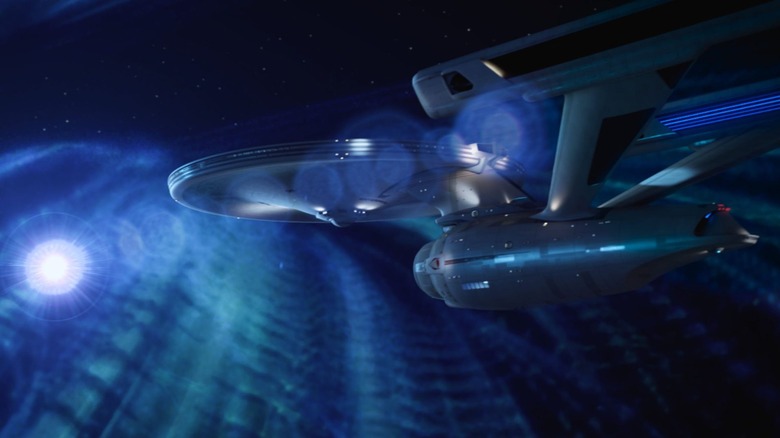Star Trek: The Motion Picture's Tough Shoot Put Its Top VFX Guy In The Hospital
On February 7, 2022, special effect pioneer Douglas Trumbull died at the age of 79. He left behind a massive and impressive legacy of cinematic visuals that might be some of the best in the history of the medium. Trumbull worked on the effects for "2001: A Space Odyssey," "Close Encounters of the Third Kind," and "Blade Runner." Trumbull was also the inventor of a filming process called Showscan, which involved shooting 70mm film at 60 frames per second. Showscan was meant to increase the visual fidelity of film by a massive margin. Modern-day 8K cameras are close to the visual fidelity of 70mm film, and most movies, despite tinkering by Peter Jackson and Ang Lee, still run at 24 frames per second.
Trumbull's work on Robert Wise's "Star Trek: The Motion Picture" might be the most impressive gig of his career merely because of the circumstances under which he worked. The story goes that Paramount approached Trumbull about making "2001"-style SFX for the movie, but he was busy with "Close Encounters" and refused. Paramount instead hired SFX technician Robert Abel to make then-revolutionary CGI effects, which would have been novel in 1979.
Abel, however, was unable to make satisfactory effects on time. After a year and millions of wasted dollars, Abel was fired and Trumbull was hired in his stead. Starting pretty much from scratch, Trumbull had to create 650 SFX shots in six months. The poor guy was working 24-hour days.
In a 2019 interview with TrekMovie, Trumbull recalled the horrible time crunch of working on "Motion Picture," and how the hard work and overwhelming anxiety wreaked havoc on his health. Poor Trumbull had to be admitted to the hospital at the end of the ordeal, afflicted with several stress-related ailments.
That's 3.61 SFX shots a day
Looking at "Star Trek: The Motion Picture" today, one would not be able to tell that the SFX were produced in a hurry. Everything looks grand and sharp and amazing, especially as the U.S.S. Enterprise soars through the massive mechanical V'Ger cloud. Trumbull, working with an already-complete ship model, added a lot more detail and also used a special photographic technique called slit-scan to create psychedelic space sequences. According to Trumbull, Paramount was worried about translating a TV series to the big screen, afraid that audiences would reject the notion ("Motion Picture" was the first time a small-screen show had been adapted to the big screen with the same cast). He said:
"[T]hey just didn't feel comfortable that you could transport a television series to feature films. That was their really big worry, that's why the poster says, "There is no comparison," i.e. to television. And they were trying to differentiate from television and give it some kind of epic qualities [...] A feeling for kind of epic spectacle was what they wanted to see."
It was Trumbull who constructed the notorious four-and-a-half-minute Enterprise flyby sequence in response.
Trumbull considered himself lucky that he and his team were able to complete the job in just six months, though, and that he didn't get to celebrate as he was in the hospital. He said:
"[I]t was really hard, and it was ... a miracle we pulled it off. And I ended up in the hospital for two weeks when we delivered it. I was just a nervous wreck and not in good physical shape. I had gallstones, I had stomach ulcers. I was just really wrung out by the time that was completed."
Luckily, Trumbull pulled through. He lived another 43 fruitful years.

